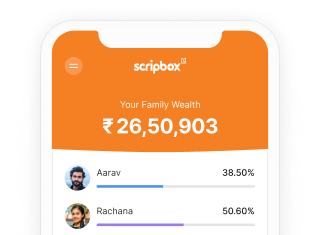Financial markets are the marketplace where various financial assets are traded. Equity and debt markets are two types of financial markets. As the name suggests, the equity market is a market for equity-related securities, and the debt market is for debt-related securities.
What is Equity Market?
An equity market is a financial marketplace where shares/stocks are bought and sold at a given market price. The equity market is also popularly known as the stock market.
How do Equity Markets Work?
A private company that requires funds for growth, expansion, or other requirements, may invite the general public to buy its shares. An Initial Public Offering (IPO) is a process by which the company may do so and thereby go public. Investors may subscribe to it and buy shares directly from the company. Such investors include retail investors, institutional investors, etc.
Once the company goes public, its shares become available on the stock exchanges. Through stock exchanges, investors can purchase shares from other investors or sell shares to other investors. The investors buying shares get partial ownership in the company, proportional to the number of shares they hold.
The price of a stock on stock exchanges is based on its demand and supply and keeps changing. If there are more buyers and fewer sellers, the stock price would be higher and vice versa. The Securities and Exchange Board of India is the regulator of the Indian equity market.
The company doesn’t need to repay the capital. Rather investors earn from the changes in share price. Other than stock exchanges, investors can also trade equity shares in the over-the-counter market without any interference from the stock exchanges.
What is the Debt Market?
A debt market is a financial marketplace where debt securities are bought and sold. It is also called the fixed income securities market.
How do Debt Markets Work?
In the debt markets, corporations or governments looking for funds for a specific time issue debt securities. Various debt securities include corporate debentures, corporate bonds, government bonds, etc. Investors looking to park funds for a particular period may invest in them.
While issuing debt securities, the issuer promises to repay the principal amount to the investor at the end of a predetermined maturity period. In addition, the issuer also promises to pay interest at regular intervals as a reward for providing funds. Thus, debt securities essentially act as loans, where the issuers are borrowers, and debtholders/bondholders are the creditors.
A few of the debt securities are also traded on the stock exchanges. For those securities, the price may fluctuate. SEBI and RBI regulate the debt market.
Difference Between Equity and Debt Market
Issuers
Issuers in equity markets are usually corporations looking to raise funds from the general public. In the debt market, debt securities such as debentures, bonds, etc., are issued by corporations and central, state or local governments, requiring funds for specific periods.
Investor status
By purchasing equity shares in a company, shareholders become partial owners of the concerned company. Equity shareholders also get the right to vote for the company matters. Debenture holders or bondholders are creditors to the company and provide funds for the time being. The company must repay the principal amount borrowed at the end of that period.
Risks
The risk involved in the equity market is higher than that of the debt market. If the company that issued equity shares goes bankrupt, the shareholders may lose the entire invested amount. It is because shareholders are ranked the last in repayment order and only get repaid after debt holders and preferred shareholders have been repaid. However, debt holders are the first to get repaid in such events.
Returns from investments
There are two ways investors earn returns from their equity investments – Dividends and capital appreciation. Dividends mean a part of the profit the company decides to distribute to shareholders, and capital appreciation is the difference between the selling price and purchase price of equity shares.
Investors investing in debt markets earn interest as a return from investments. Issuers, i.e. companies or governments, periodically pay interest to their creditors. Some bonds also trade on stock exchanges. In such cases, investors may also benefit from capital appreciation.
Nature of returns
The returns in equity investments usually depend on the share price at the time of selling and therefore are not fixed. In contrast, debt securities often pay fixed interest at regular intervals.
As the risks involved in the equity market are more than the debt market, the equity market offers potentially higher returns than the latter one.
Volatility
The prices of equity shares change frequently compared to debt securities; therefore, the equity market involves more volatility than the debt market.
Regulators
The main regulatory body for the Indian equity market is the Securities and Exchange Board of India (SEBI). The debt market in India is regulated by SEBI and the Reserve Bank of India (RBI).
Equity Market vs Debt Market : Key Differences
| Point of difference | Equity market | Debt market |
| Issuers | Companies issue equity shares. | Companies and governments issue debt securities. |
| Investor status | Shareholders: Act as partial owners. | Debt holders: Act as creditors. |
| Risks | Relatively higher. | Lower than equity securities. |
| Type of Returns | Dividends and capital appreciation | Interest (capital appreciation if securities trade on the secondary market.) |
| Nature of returns | Not fixed, and potentially high returns. | Usually fixed and relatively lower than equity shares. |
| Volatility | Higher | Lower |
| Regulators | SEBI | SEBI and RBI (for bonds) |
Final Thoughts
Equity and debt markets are two crucial elements of the financial market universe and both act as the bridge between those seeking funds and those wanting to invest. However, investors should thoroughly understand equity, debt, or both markets and invest after understanding their investment objectives.











Show comments